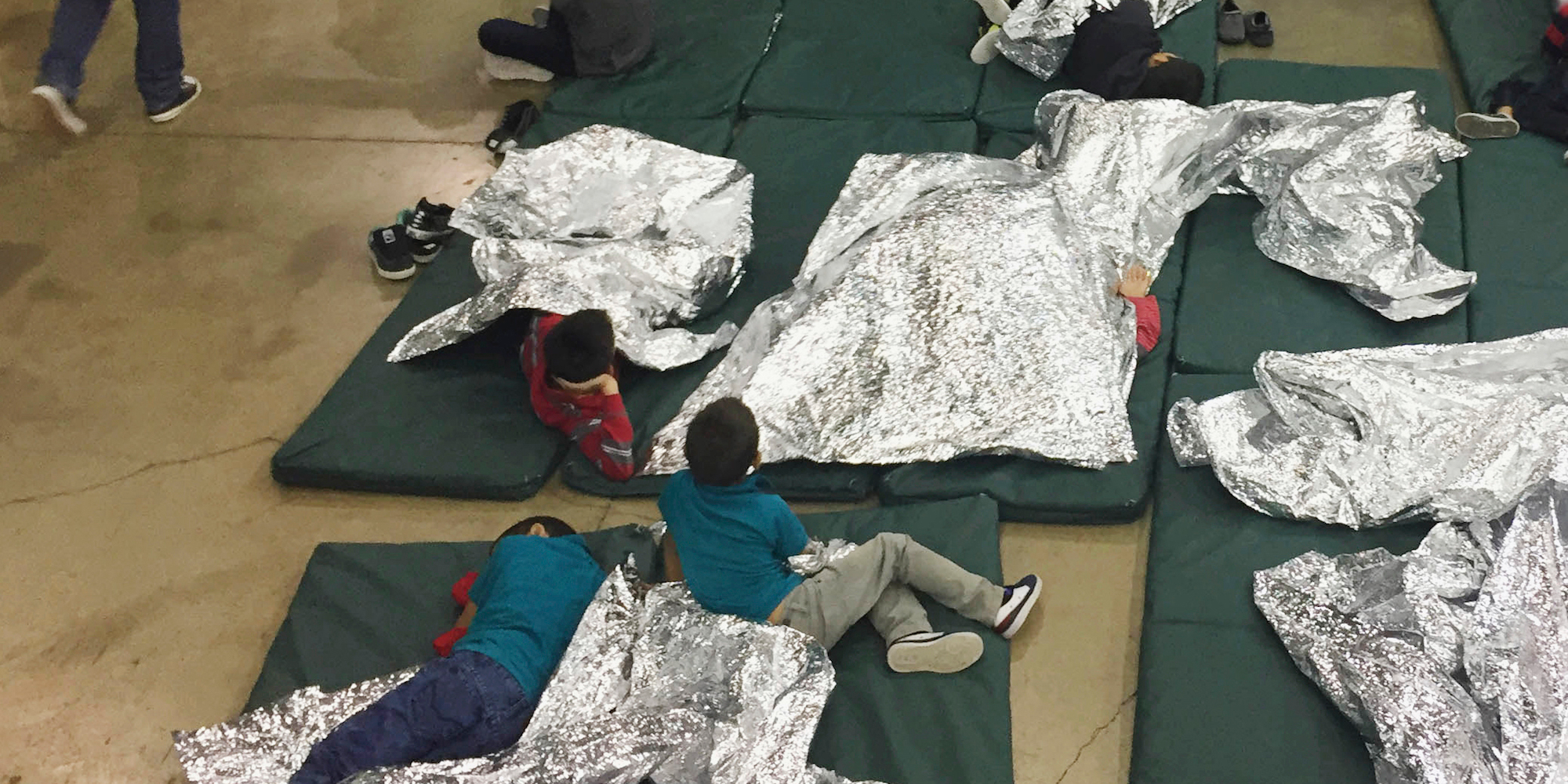- The Trump administration has been under fire for weeks over its new “zero-tolerance” policy that has resulted in the separation of thousands of migrant children from their parents.
- On Sunday, a handful of reporters were permitted to tour Border Patrol’s largest processing facility in McAllen, Texas, where many of the family separations are taking place.
- The reporters said they saw hundreds of migrants – including children – in cages, sleeping on mattresses on the ground, under foil blankets.
Public outrage has been brewing for weeks over the Trump administration’s tactic of splitting up families at the US-Mexico border under a new “zero-tolerance” policy to criminally prosecute all migrants who cross the border illegally.
Addressing the outcry, the federal Customs and Border Protection agency permitted a handful of reporters to tour its largest processing center – known as “Ursula” – on Sunday in McAllen, Texas, where the majority of the separations have reportedly occurred.
None of the reporters were permitted to take their own photos or interview the migrants. Instead, the government provided several handout images that were edited to blur the faces of the detained children.
Nearly 2,000 children were separated from their parents under the zero-tolerance policy in the first six weeks it was in place, the Department of Homeland Security said Friday. During that time, numerous reports have circulated throughout the national media describing devastated parents, traumatized children, and dismal-looking conditions they are being held in.
The Trump administration has for the most part sought to portray the family separation tactic as a side effect of the zero-tolerance policy, not the goal of the policy itself.
Homeland Security Secretary Kirstjen Nielsen weighed in on the controversy Sunday evening, tweeting that there was no policy to separate families at the border, and that no migrants legally seeking asylum at designated ports of entry were being criminally prosecuted, despite some reports to the contrary.
"We do not have a policy of separating families at the border. Period," Nielsen tweeted. "This misreporting by Members, press & advocacy groups must stop. It is irresponsible and unproductive. As I have said many times before, if you are seeking asylum for your family, there is no reason to break the law and illegally cross between ports of entry."
Here's a glimpse of what Border Patrol's largest processing facility looks like:
The migrants are contained in large cages, sleep in mattresses on the floor of the facility, and are given foil blankets for warmth. Border Patrol agents told media that everyone in the facility is given adequate food, access to showers, clean clothing, and medical care.

Sources: Los Angeles Times, Associated Press
On Sunday, the facility was holding 751 family members and 258 youth. The facility was divided into separate wings: one for unaccompanied children, one for adults, and one for mothers and fathers with children.

Source: Associated Press
Children at the age of four and under are not separated from their parents at the McAllen facility, according to Rio Grande Sector Chief Manuel Padilla, though he said that could change. By law, children must be turned over from Border Patrol custody to shelters funded by the Health and Human Services Department within 72 hours.

Source: Los Angeles Times
A number of disturbing stories have emerged from advocates and lawyers who have toured the McAllen facility and others like it. Michelle Brane, director of migrant rights at the Women's Refugee Commission, said she met with a 16-year-old girl who for three days had been taking care of a young girl who was separated from her mother. The 16-year-old said she had to teach other children in the cell to change her diaper.

Sources: Associated Press, Business Insider
McAllen isn't the only place where children are being stored. A former Walmart in Brownsville, Texas, has been renamed "Casa Padre" and is now being used to hold unaccompanied children. About 1,400 boys are being kept there, according to the Washington Post.

Read more about conditions inside the Casa Padre center here.

